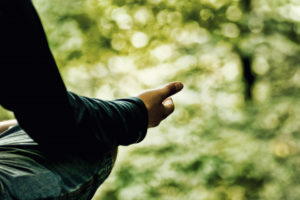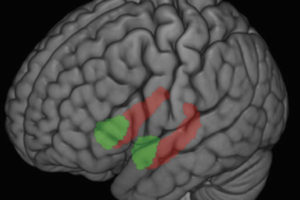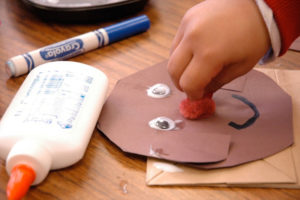Popular culture tells story after story of artists from Vincent van Gogh to Edgar Allan Poe who only find true creativity in the depths of their despair—but what if positive emotions can also boost creativity?
That’s the question that an interdisciplinary team at the University of Wisconsin–Madison has begun to explore, specifically in the context of graduate engineering education.
“Even though people think that creative people are miserable or unhappy, there is a lot of research that shows that’s not true,” says Pelin Kesebir, an assistant scientist at the Center for Healthy Minds who collaborated with study lead Professor Susan Hagness in the College of Engineering. “Actually, positive emotions help creativity. They open up our minds—we see more possibilities when we are happy or when we are experiencing positive feelings.”
The team was curious to explore how mindfulness could help engineering graduate students.
“Graduate students in the College of Engineering at UW–Madison are working on research problems that have the potential to address a variety of societal needs and challenges,” says Susan Hagness, the Philip Dunham Reed Professor of Electrical and Computer Engineering who led the project. “Enhancing the creative capacity of these students would benefit society through the innovations they produce both in the short-term and over the course of their careers.”
Hagness, together with Wendy Crone, the Karen Thompson Mehdi Professor of Engineering Physics, and Kesebir, received a grant from the National Science Foundation for the exploratory study. They hypothesized that mindfulness techniques would boost the students’ well-being, creativity, altruism and empathy, and potentially enhance their ability to conduct high-impact transformative research in engineering.
The team recruited about 70 graduate students, split into two groups – the treatment group and the wait-listed control group. Before the training started, all students took an online questionnaire that measured their emotional habits, personality, perceived stress level, mindfulness and health symptoms. They also completed measures of creativity and indicated their satisfaction with research they were pursuing as graduate students.
Then half of the students, the treatment group, met once a week for eight weeks and learned mindfulness skills, including breathing techniques, silver lining meditation (bringing to mind a difficult situation while exploring multiple sides and approaching the situation as a learning opportunity), and loving-kindness meditation (cultivating feelings of love and empathy towards loved ones, others and oneself). They also learned other well-being tools, like gratitude journaling, and compassion practice.
“Enhancing the creative capacity of these students would benefit society through the innovations they produce both in the short-term and over the course of their careers.”
After the trainings, students in both groups repeated the online questionnaire. On measures assessing emotional habits and health, the team found that participants who received the treatment had increased healthy emotions and well-being over the semester, whereas those in the wait-listed control did not experience such an increase. Students who received the treatment reported a significantly higher ability to bounce back from negative emotions and ability to sustain positive emotions than those who did not.
“We are excited by these initial findings,” says Crone. “Mindfulness training has shown proven benefits in a variety of situations, and we would like to see if it can also have a positive impact on the ability of graduate students to fulfill their potential as effective and creative researchers.”
Even participants’ health seemed to have slightly benefited from the intervention, says Kesebir. The intervention group reported a modest reduction in physical symptoms – like headache, back pain, sleep problems – while no such change occurred for the control group.
So how did the training affect creativity?
Graduate students who underwent the intervention reported increased endorsement of personal qualities associated with creativity, such as being good at dealing with uncertainty or finding the world to be a very interesting place. The training also seemed to increase their satisfaction with their research as students, whereas those in the waitlisted control group did not display any such increase.
Due to the small sample size, further research is needed, but the results are encouraging. The team hopes to broaden the scope and teach mindfulness training to more engineering graduate students, not only at UW–Madison, but also at partnering institutions.
“This is one of the top engineering colleges in this country and in the world,” Kesebir says, “These are the people who will determine the shape of technology in coming decades. We should absolutely support their creativity and flourishing.”
-Brita Larson






